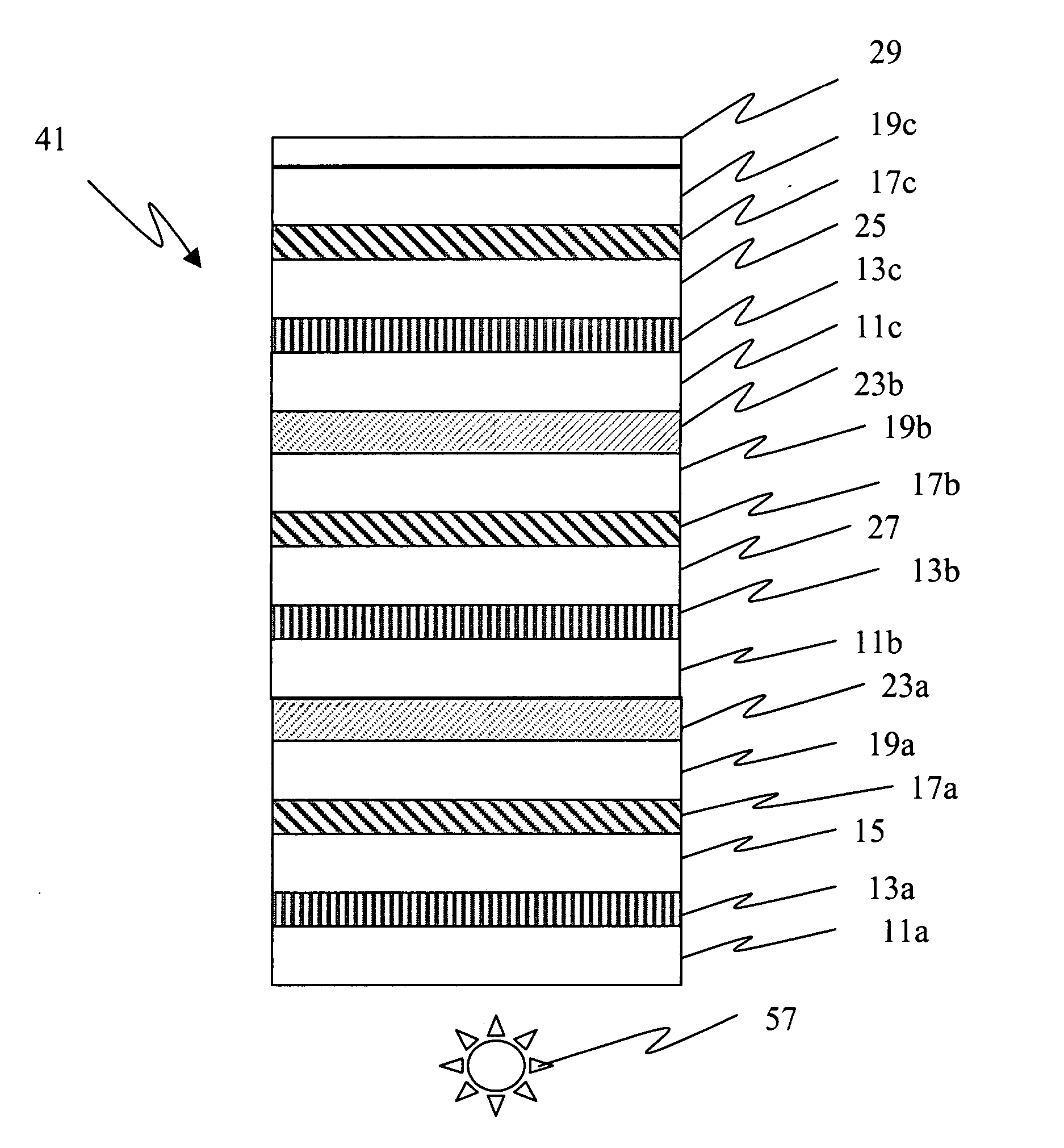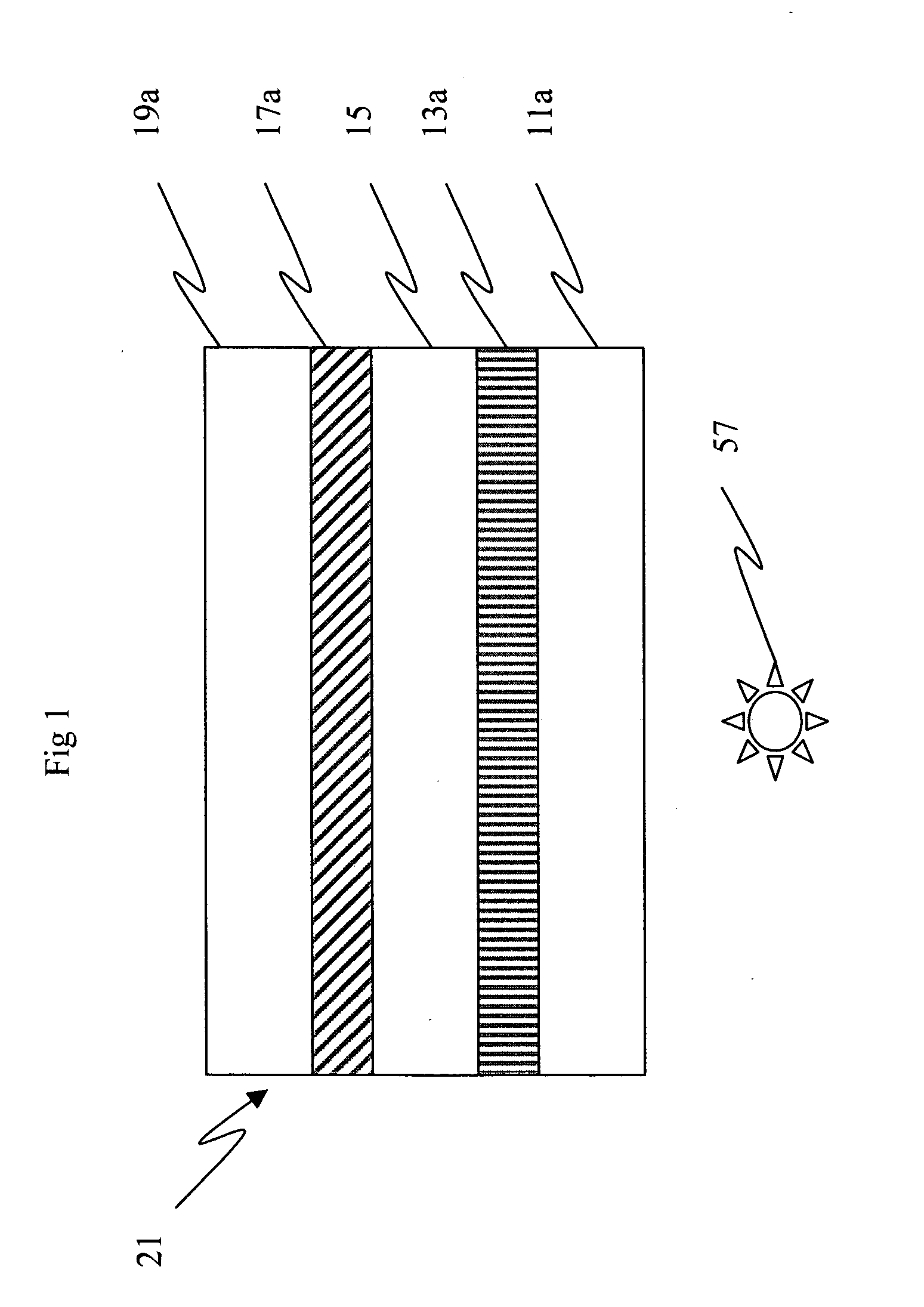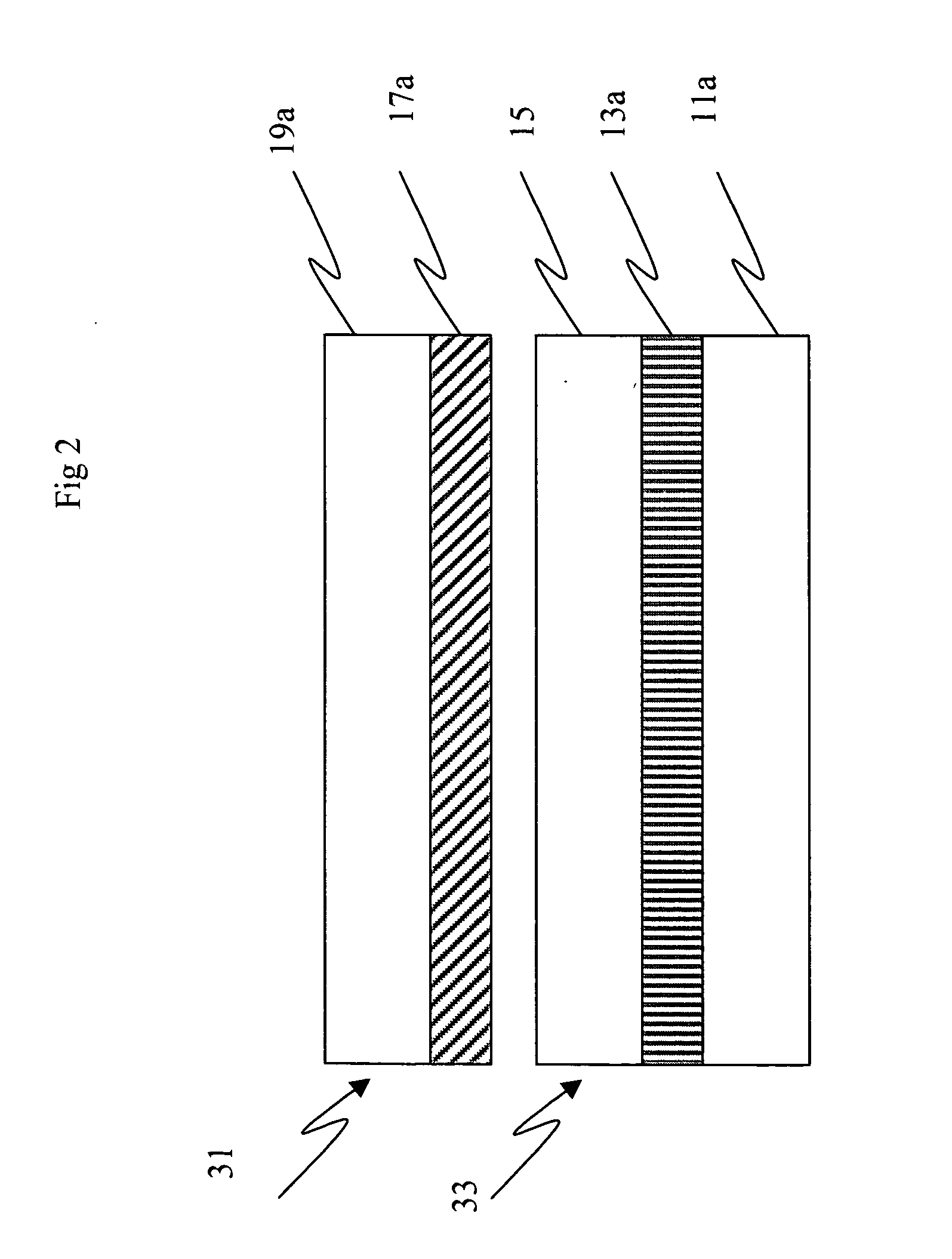Substrate free flexible liquid crystal displays
a liquid crystal display and flexible technology, applied in non-linear optics, instruments, optics, etc., can solve the problems of reducing the overall efficiency of the light exiting the display, reducing the attractiveness of the display, and only useful devices for flat applications. , to achieve the effect of improving flexibility, reducing the number of layers, and expanding utility and us
- Summary
- Abstract
- Description
- Claims
- Application Information
AI Technical Summary
Benefits of technology
Problems solved by technology
Method used
Image
Examples
example 1
Control
[0136] This example is shown in cross section in FIG. 1 in its laminated final form but was made from two separate webs (31 and 33) as shown by FIG. 2. Assembled display cell 33 was 125 micron, clear polyester substrate such as Dupont ST504 (11) and an ITO layer (13) of approximately 300 ohms / sq. The ITO was etched with a pulsed laser into a series of parallel line with approximately 3 mm spacing. The lines were in the machine direction of the web. The ITO was coated with an imageable layer containing gelatin and droplets of cholesteric liquid crystal as a separate web (31). A 4.7 mil clear polyester substrate (19) such as Dupont ST 504 was sputtered coated with a layer of ITO (17) in a vacuum deposited chamber. Such materials are commercially available from a number of ITO coaters such as Bekhart, CP Films, Sheldahl and Technimet. The ITO level was at approximately 300 ohms / sq. The ITO in web 31 was then etched with a pulsed laser with a series of parallel lines 90 degrees ...
example 2
Control
[0137] This example is shown in FIG. 4 and was made by forming three separate assembled display cells as described in example 1. The first assembled display cell was coated on a 125 micron clear polyester base with a imageable layer containing gelatin and droplets of blue cholesteric liquid crystal, the second assembled display cell was coated on a 125 micron clear polyester base with a imageable layer containing gelatin and droplets of green cholesteric liquid crystal and a third assembled display cell was coated on a 125 micron clear polyester base with a imageable layer containing gelatin and droplets of red cholesteric liquid crystal. Once the three assembled display cells were formed, they were adhered together by placing a strip of optically clear adhesive such as 3M 8142 (approximately 25 micron thick) between assembled display cells 1 and 2 and then between the second and third assembled display cell. Such a configuration forms a stacked three-color liquid assembled ...
example 3
[0138] This example (cross section shown in FIG. 5) was made similar to example 2 except layers 19c (top clear conductive layer) and 29 (black absorbing layer) were replaced with a printed layer patterned colored conductor, resulting in one less substrate as compared to Example 2. In this case a UV curable ink containing conductive carbon was patterned with a parallel line spacing. The layer had a conductivity of approximately 250 ohms / sq. This display had a minimum of 17 layers.
PUM
| Property | Measurement | Unit |
|---|---|---|
| adhesive strength | aaaaa | aaaaa |
| adhesion | aaaaa | aaaaa |
| adhesion | aaaaa | aaaaa |
Abstract
Description
Claims
Application Information
 Login to View More
Login to View More - R&D
- Intellectual Property
- Life Sciences
- Materials
- Tech Scout
- Unparalleled Data Quality
- Higher Quality Content
- 60% Fewer Hallucinations
Browse by: Latest US Patents, China's latest patents, Technical Efficacy Thesaurus, Application Domain, Technology Topic, Popular Technical Reports.
© 2025 PatSnap. All rights reserved.Legal|Privacy policy|Modern Slavery Act Transparency Statement|Sitemap|About US| Contact US: help@patsnap.com



